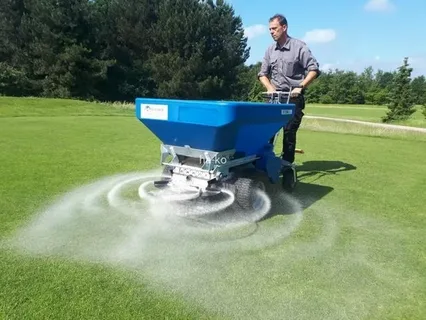Fertilizer spreader, which is among the indispensables of the agricultural sector, helps to ensure the growth of plants much more effectively. These machine models, which have managed to maintain their popularity since their first use, continue to be actively used.
What is a Fertilizer Spreader?
Fertilizer is one of the main nutrients of cultivated plants, grasses and trees. In order for fertilizers produced in different forms to provide the necessary support in the right way, it is important to distribute the right amount, homogeneous and balanced on the relevant surface. Fertilizer spreader is defined as a machine that is frequently preferred in recent times in order to carry out the relevant process with minimum manpower. Thanks to this machine, it is possible to apply not only chemical but also organic fertilizers to the relevant area. Let’s move on to where the fertilizer spreader is used.
Where is Fertilizer Spreader Used?
The areas of use of fertilizer spreaders were extremely narrow when they were not yet fully informed about them. Therefore, instead of successful steps to be taken using these machines, fertilization operations continued to be carried out with classical methods.
With the passage of time and the emergence of much more information about these machines, it is possible to see that they are actively used in the following areas.
- Vegetable cultivation: Base fertilization operations in the greenhouse or field area
- Grain fields: Fertilizer applications after the sowing of cereals such as barley, mi and wheat
- Pastures and meadows: Where fertilizer is needed to strengthen the grasses
- Orchards: Controlled fertilization under the trees
With the fertilizer spreader to be used correctly, difficult and long fertilization processes are completed in a short time.
How Does a Fertilizer Spreader Work?
Although they are produced in different models today, the basic working principles of fertilizer spreaders are similar to each other. The models generally continue to work with the movement it receives from the PTO shaft in the tractor.
The fertilizer in the fertilizer hopper is smoothly transmitted to the exit points with the spiral system or disc located at the bottom of the machine. With the throwing arms or rotating discs, the fertilizer is spread to the relevant area. Depending on the type of model to be selected, the control process is carried out on issues such as automatic dosing, spreading amount and distance.
Advantages of Using Fertilizer Spreaders
One of the biggest advantages of people using fertilizer spreaders is that they can fertilize in a short time and with less manpower. At the same time, thanks to the homogeneous distribution of fertilizer, the problem of unnecessary fertilizer use is eliminated. Thanks to the correct dosage control, fertilization processes are carried out in a way that is sensitive to both the soil and the environment.
Fertilizer Spreader Types
For many people, the first model that comes to mind when it comes to fertilizer spreaders is the disc model. However, along with this model, auger (belt) machines, hanging or towed machines, air pressure (pneumatic) machines continue to be actively used.
https://ucbasaktarim.com/en/what-fertilizer-spreader-blogpost/

